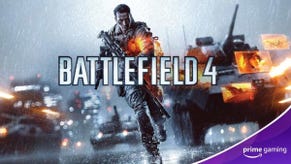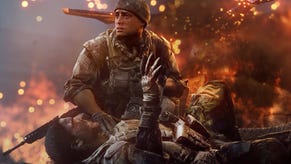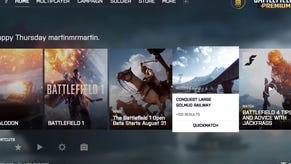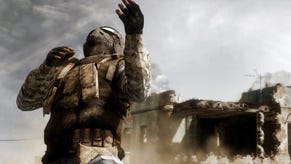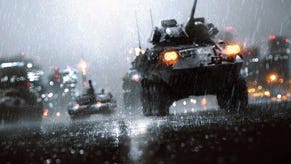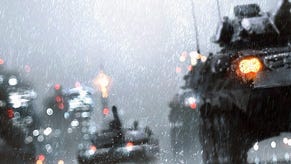Battlefield 4: Second Assault review
Metro: last fight.
After a launch that can only be described as patchy - in every sense - Battlefield 4's online service is slowly starting to find its feet. There's inexplicably still no way to play Conquest on PS4 in the US, and you still can't party up before entering a match (something Halo 2 managed to figure out back in the 1500s), but DICE's levolutionary online battleground is steadying itself for a headlong rush into the next-gen.
And that's exactly where EA showed off the first of two downloadable add-ons appearing before the end of this year: in a room full of quietly humming Xbox Ones, on 16 vs 16 matches between members of the traditional gaming press and the altogether more 'enthusiastic' YouTube community. This first pack of four maps, Second Assault - available only on Xbox One for now - will be very familiar to anyone who has toiled away on the crumbling terrain of Battlefield 3. It's a greatest hits of sorts, a four-strong collection of BF3's most popular maps, remixed and lightly resprayed for Battlefield 4.
So here we have Operation Metro, Caspian Border, Gulf Of Oman and Operation Firestorm, all with a little less Battlefield 3 blue and a smattering of BF4-style levolution (it's a horrendous word, but it's sadly the easiest way to describe the map-altering 'events' that BF4 pins its maps around).
First up, much like it was in the Battlefield 3 beta many years ago, is Operation Metro, the rectangular vacuum of bullets and bodies that lends itself very well to Rush and not so well to Conquest. The problem, of course, is that the central capture point is stuck in the middle, with no way of flanking to either of the others. Control the centre, control the map, control the game. Inevitably, this leads to a ludicrous woodchipper of a killzone on the upper floor of the main room, with engineers launching rockets like party poppers at a Parisian New Year's party and the average life dropping below 3 seconds for all but the most capable (or cautious) of combatants.
Still, it's a beauty on Rush, the natural frontline shifting from the open scrap in the park, through to the claustrophobia of the tunnels, and finishing with a flank-happy melee in the Parisian streets. Chuck in the levolution (sorry) that sees the ceiling collapse if you can blow out the support pillars, and you have a solid start for Second Assault (especially if you're on the winning team).
After the narrow confines of Metro, it feels nice to clamber out into the blue skies of Caspian Border, the vehicle-heavy field map that frees teams up to experiment with strategies, class types and stupid, bravado-fuelled plans that almost never come together. Caspian Border is a map designed for Conquest, and while it scales reasonably well all the way down to Team Deathmatch (does anyone really play TDM on Battlefield?), this is really a playground for the myriad systems that Battlefield 4 pulls together with panache.

The real beauty of a map like Caspian Border lies not in its design but in its potential. Unlike Call Of Duty maps, or even Halo, Quake and Doom before them, Battlefield arenas don't rely exclusively on specific lines of sight, choke points and circular flows. These spaces are suggestions rather than specifics - this ridge might be good for sniping, that tunnel may not be worth sprinting down. Factor in a level of destruction that can alter a map's layout and you simply cannot have something as tightly architectured as a Call Of Duty map.
It's better for it, though. In many ways, Caspian Border is the ultimate Battlefield 3 map; a space where it's almost impossible not to have fun, where stories happen independently across its expanses and where every match feels completely different. Yes, the subtle verticality means that snipers can't just rule every corner, and there is value in circling counterclockwise in a tank, but it's also entirely possible to spend a 20-minute match in the air or hunkered down at 'A' chucking out medpacks.
Also, Caspian Border offers up Second Assault's most obvious map deformation. Players can fell its central radio tower and watch it collapse into a labyrinth of habitable piping. It's a bit second-division when compared to Shanghai Siege's infamous skyscraper collapse or Flood Zone's stunning levee-break, but you'd be a miserly sod if you didn't at least crack a smile.
Similar in terms of size if not ambition, Operation Firestorm returns, now one year on from the events of Battlefield 3 and looking slightly worse for wear. This was never the prettiest map, and even in its now dilapidated state there are too many dreary grey pipes and flatland gunfights for it to ever be labelled a classic.
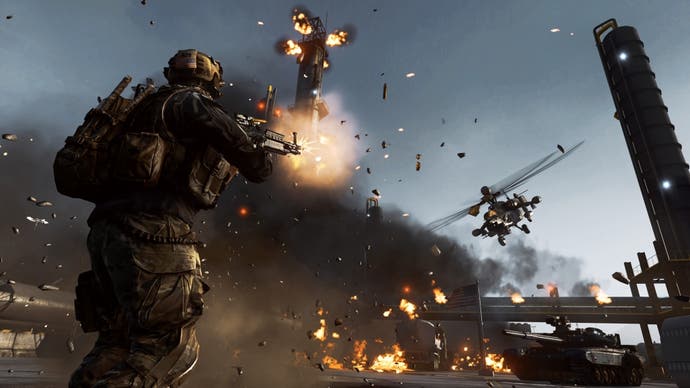
Conquest, Rush and Obliteration on Firestorm are still perfectly pleasant, of course; it's tough not to enjoy Battlefield 4 in full flow, regardless of where you're playing it. It's just that the flat, square chunks of dirt and turf and featureless buildings feel like you're waging battle in a dull suburb of Amsterdam rather than a military hotspot. The less said, too, about the new fire effects on this Xbox One version the better. Pixellated flames that wreak havoc on frame rate don't really scream next-gen, even if you can shoot the pipes to make them combust.
If Caspian Border represents the purity of Battlefield, then Operation Firestorm is its darker, grubbier side, with too many places to spawn-trap inferior teams and minimal scope for unique drama. A dud, quite frankly.
Rounding out this inconsistent but largely enjoyable retro selection is Gulf Of Oman, the sweeping desert storm that first appeared in Battlefield 2, making its 2014 equivalent a remake of a remake. Oman became a Battlefield 3 favourite thanks to its varied capture points and imposing apartment blocks, and it's still a grand place to level to the ground with errant rocket fire.

Outside of the overly deliberate Metro, this is the most specialised of Second Assault's maps, with a concentrated focus on air-to-ground combat. Infantry forces have plenty of places to hide from encircling choppers, but without coordinated anti-air efforts, they're going to struggle to capture points on any mode.
That is, until the storm hits. Much like Paracel Storm, things start to get a bit choppy about half way through a game on Gulf Of Oman, and soon everything goes a bit Spec Ops: The Line. The sandstorm is quite the spectacle on next-gen tech, with particles and debris being hurled around like confetti, impinging on your visibility and only adding to the chaos of an already hectic battle arena. Genuinely exciting stuff.
It's not just maps, of course. As has become tradition, DICE has crammed a new mode, new weapons and a new vehicle into Second Assault to spice up the general day-to-day play, but they're nothing like as bold as Tank Superiority from Battlefield 3. A dune buggy lets you tear through Operation Firestorm's murky dust bowls, and it's a suitably snappy ride, if a little too open for genuine raids. Capture The Flag joins the likes of Obliteration, Defuse, Rush and Conquest, and is as unremarkable as it sounds. A daring flag-grab is as thrilling here as it is anywhere else, but much like Team Deathmatch, it's not really what Battlefield is for.
Second Assault marks another successful map pack for DICE, although one not nearly as sharp as Battlefield 3's marvellous End Game sign-off. Two excellent maps, one decent effort in Metro, and the perfunctory but underwhelming Operation Firestorm are enough to freshen up the rotation, while the new weapons might sate those who've already (somehow) exhausted the 'vanilla' game's already sizeable arsenal.
A punchy blast, then, but evidence suggests that Premium subscribers will be better served in 2014, given Battlefield 3's superb commitment to content. Until then, there's a radio tower to topple - see you at the bottom. I'll be hiding in a pipe, cowering from the YouTubers.



